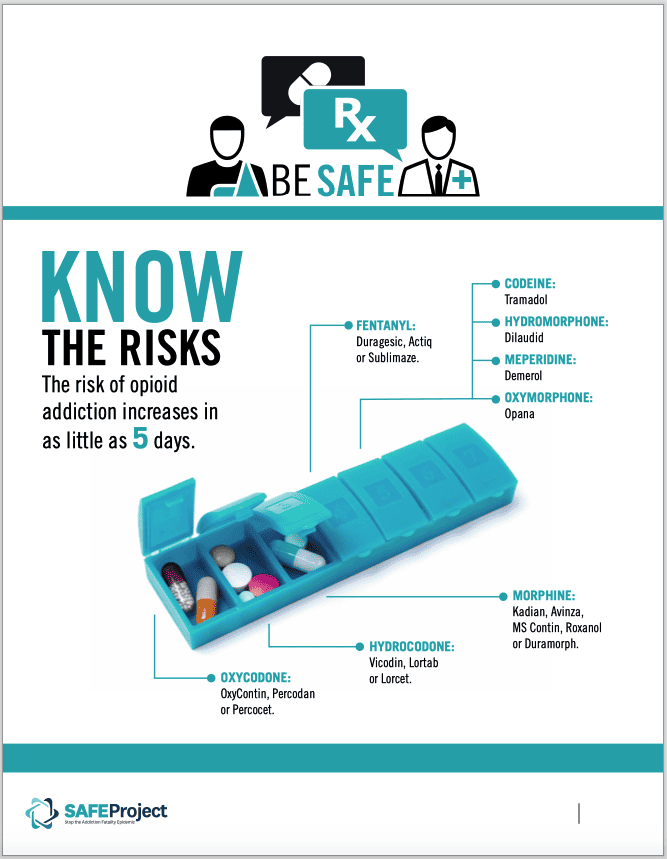If you or someone you love is experiencing pain, you may likely visit a doctor to assist with a form of prescription pain relief. Opioids are just one type of medication prescribed to alleviate pain, but they come with a substantial risk if misused, used over long periods of time, in high doses, or combined with other medications. These risks include respiratory depression, dependency and more.
There are non-opioid pain-relievers available over the counter and through a prescription from your medical provider. These facts will help you identify opportunities to avoid commonly abused prescription medications when it is medically appropriate to do so.

Prescribed Opioids Can Come in a Variety of Forms
If your medication contains one of the following generic medications, it contains an opioid, which requires caution and vigilance in use, storage and disposal:
Buprenorphine • Codeine • Diphenoxylate • Fentanyl • Hyrdrocodone • Hydromorphone • Meperidine • Methadone • Morphine • Oxycodone • Oxymorphone • Pethidine • Propoxyphene • Tramadol
Non-Habit Forming Options Include:
Acetaminophen • Aspirin • Naproxen • Ibuprofen
Prescription Options for Pain Include:
Prescription strength Non-steroidal, Anti-Infammatory Drugs (NSAIDs)
Other prescription non-opioid pain relievers include: anti-epileptics, antidepressants, topicals, muscle relaxants, and steroids. Talk to your doctor about the risks and benefits of any medication.
It is ok to ask questions of your doctor or pharmacist. You deserve to understand why something has been suggested, and if it is the best course of action for you. If you and your doctor determine that opioids are the best course of treatment, follow your doctor’s guidance and use them safely with the tip sheet found here: safeproject.us/painkillers.

